Plant samples from the Batelle Darby Metro Park trip!
Last week we went to Batelle Darby Metro Park to discover some plants! But not just any plants, plants that love limestone soils! This is due to the geography of Ohio (more on that later). Below are a couple limestone lovers, followed by a couple invasives and two plants from families we’ve learned about!
Northern Arrowwood – Viburnum recognitum
This plant is a prominent native to the limestone soils of Batelle Darby. The shoots of this plant were used by indigenous peoples for arrow shafts (https://www.blueplanetbiomes.org/northern_arrowwood.php).
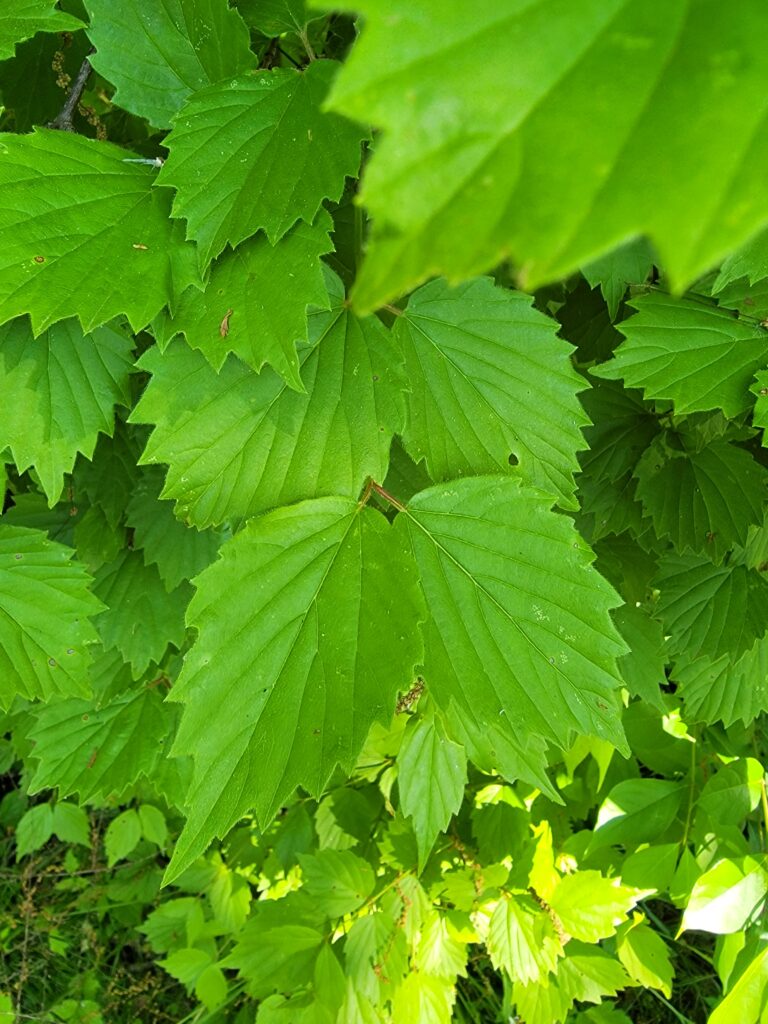
Leaves of the northern arrowwood
Common/Northern Hackberry – Celtis occidentalis
The fruits of the hackberry tree are high in calories, and were used extensively by indigenous peoples for snacks and cooking.
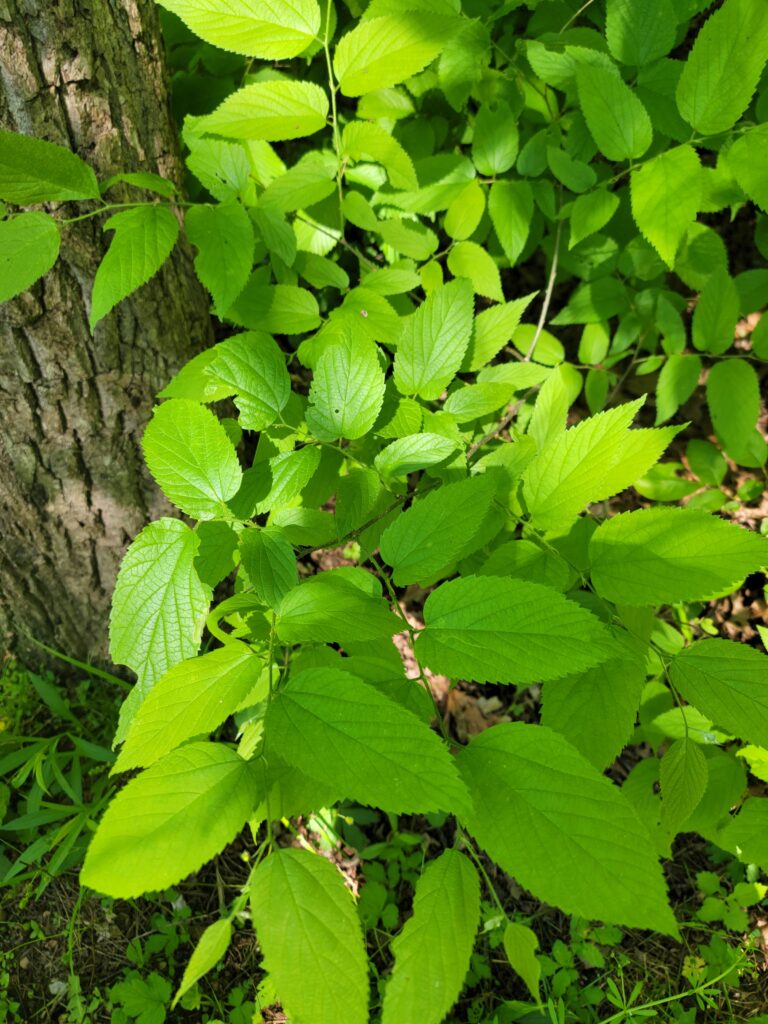
Leaves of a hackberry tree, which resemble those of stinging nettle. The bark is very “warty” as well!
Chinquapin Oak – Quercus muehlenbergii
Acorns of the chinquapin oak are noted for being some of the sweetest of acorns from oak varieties. These acorns are enjoyed extensively by both humans and wildlife.
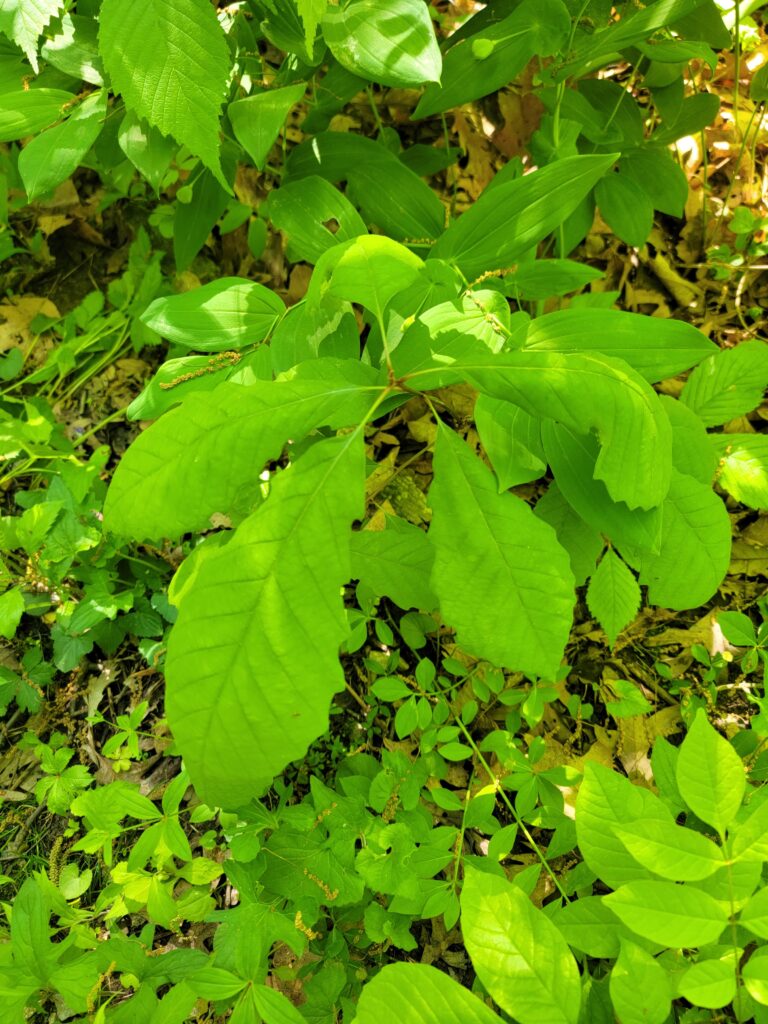
A young chinquapin oak.
Eastern Redcedar – Juniperus virginiana
Redcedars are slow-growing trees, known as a pioneer species (species that are the first to repopulate disturbed environments). They can live up to 900 years! Moths tend to avoid the wood of cedars, leading to their use as chests and closets for fabrics.
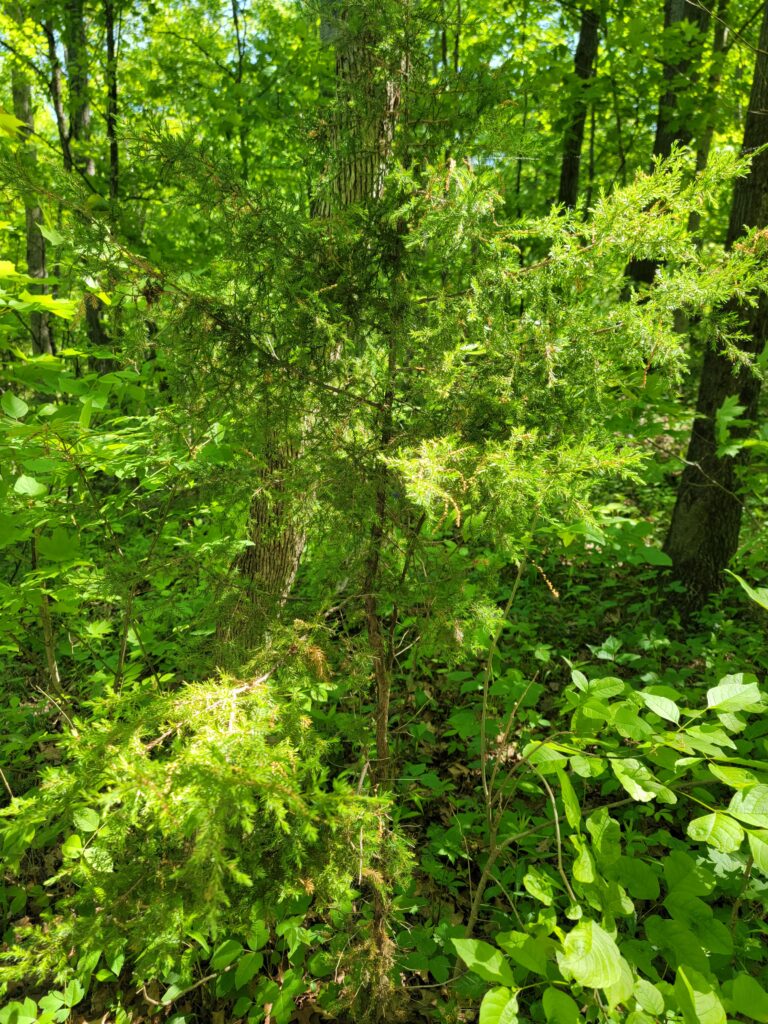
Eastern Redcedar tree.
American Columbo – Frasera caroliniensis
American columbo are usually seen as low and spread out near the ground, but flower into tall stalks which can take upwards of 30 years to develop.
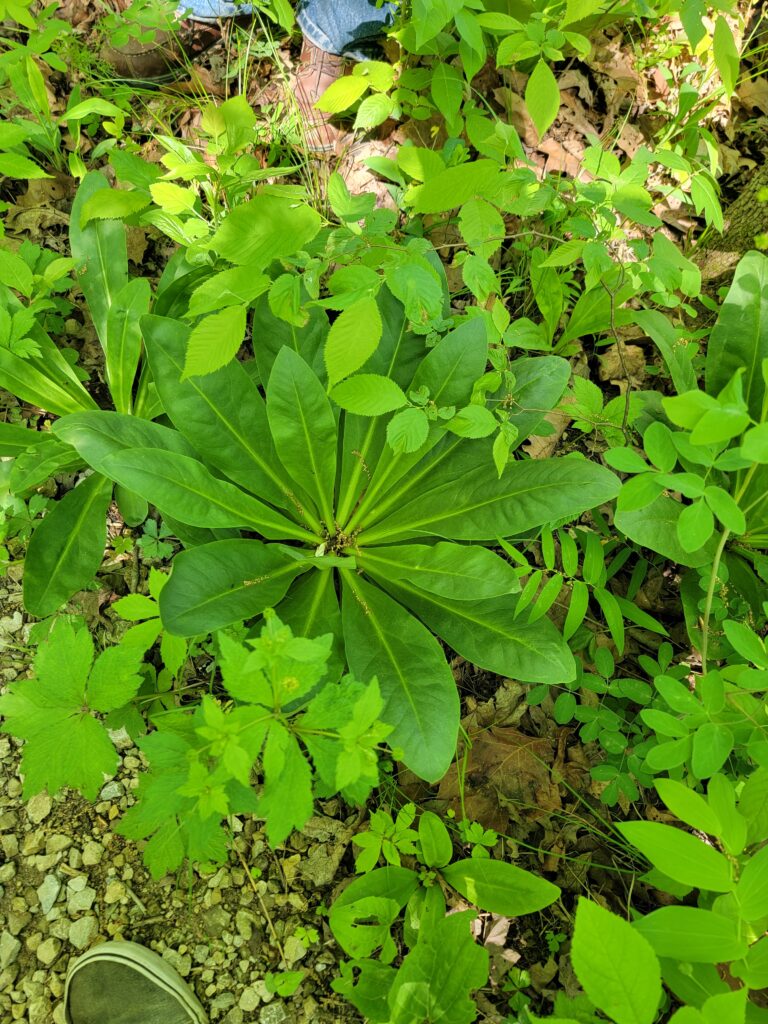
American columbo in its “low form.”
Next, we have two invasives that are found frequently in the limestone soils of western Ohio.
Amur Honeysuckle – Lonicera maackii
One of the most well-known and vigorous invasives of Ohio, it was originally used as an ornamental plant from Eastern Asia. It is extremely detrimental to the environment.
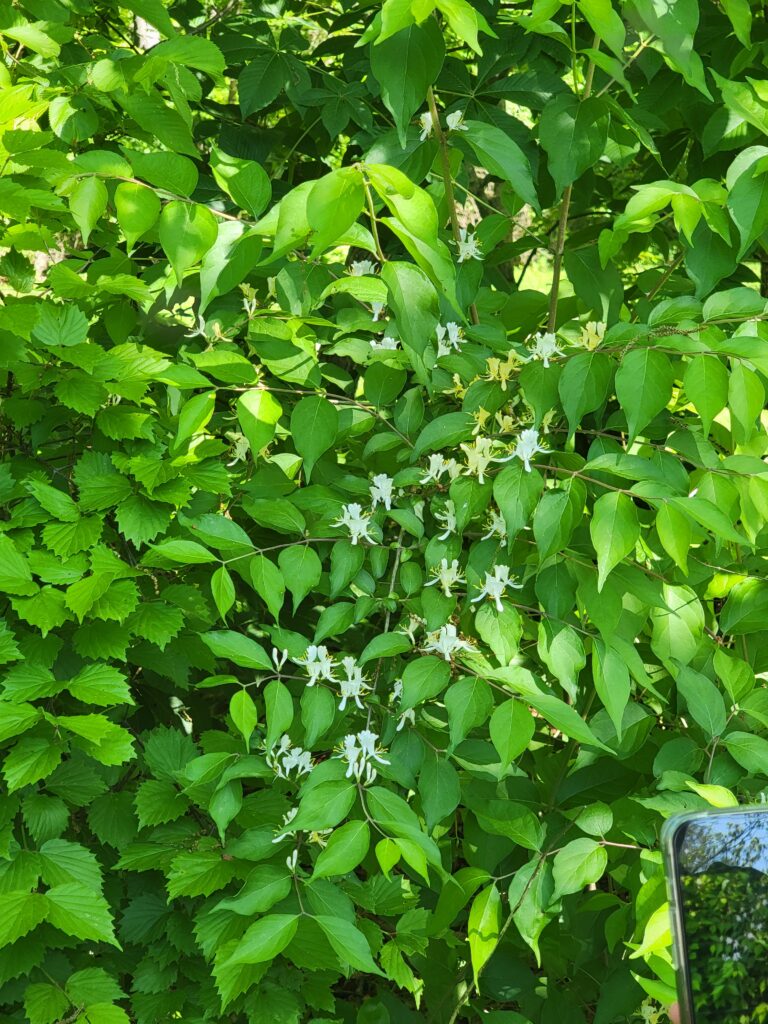
Flowers and branches of the invasive honeysuckle.
Garlic Mustard – Alliaria petiolata
Garlic mustard is an invasive biennial flower which grows clumps of leaves in the first year, and flowers during the second. The taste and smell are like that of garlic and are edible once chopped up. The plant has no environmental benefit to North American native species and are detrimental to many species of butterflies. If you find it, pull it and make some pesto with it…it’s really good!
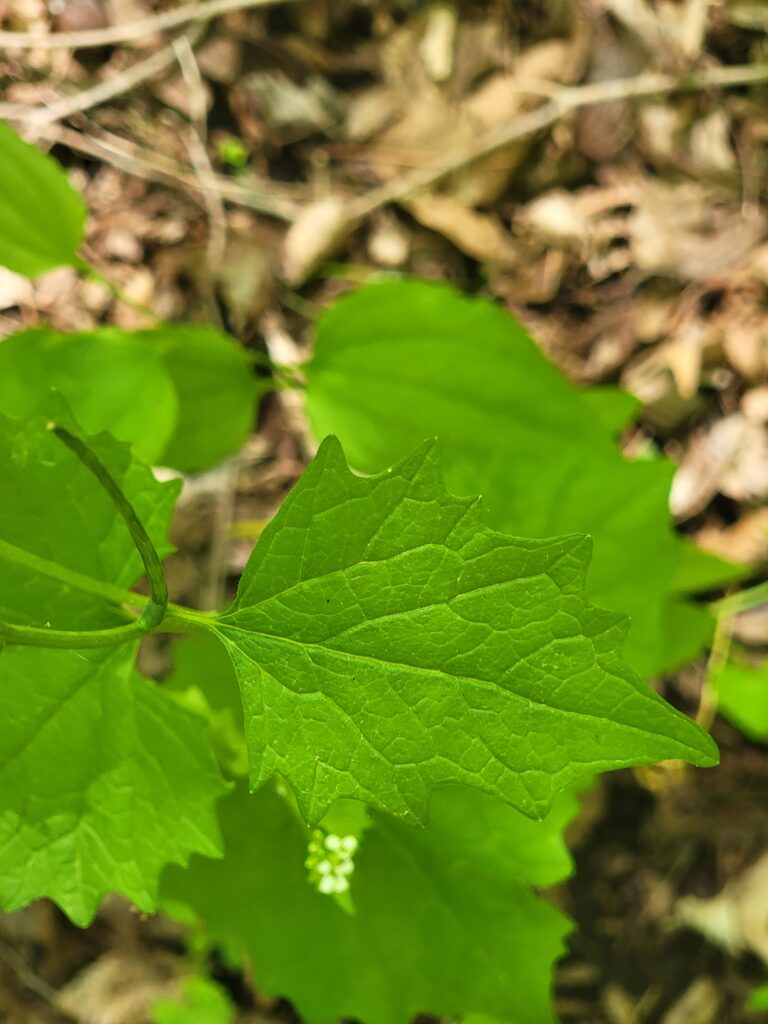
Leaves of the garlic mustard.
Finally, I was asked to find two plants from families we are learning about in our class. The first I chose was garlic mustard (sorry for double dipping!) which is part of the brassicaceae (mustard) family.
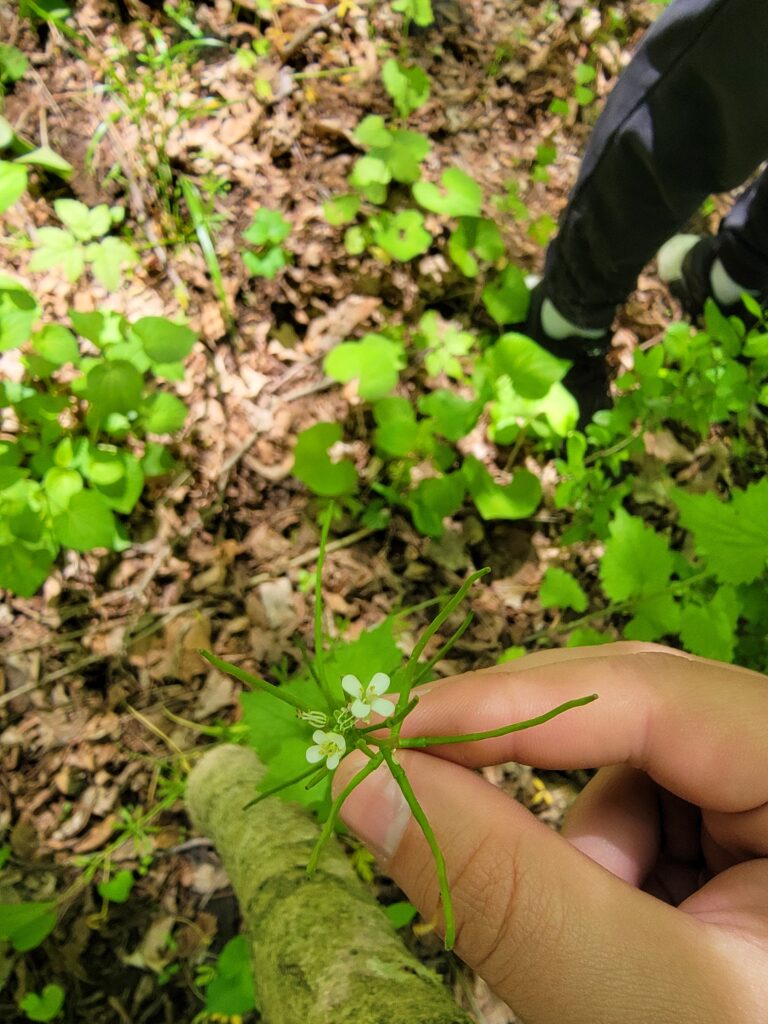
Flowers of the garlic mustard.
Spring Avens – Geum vernum
Spring avens are part of the rosaceae family. These are most often found in floodplains and rich soils. They have a two-year life cycle and are perennials.
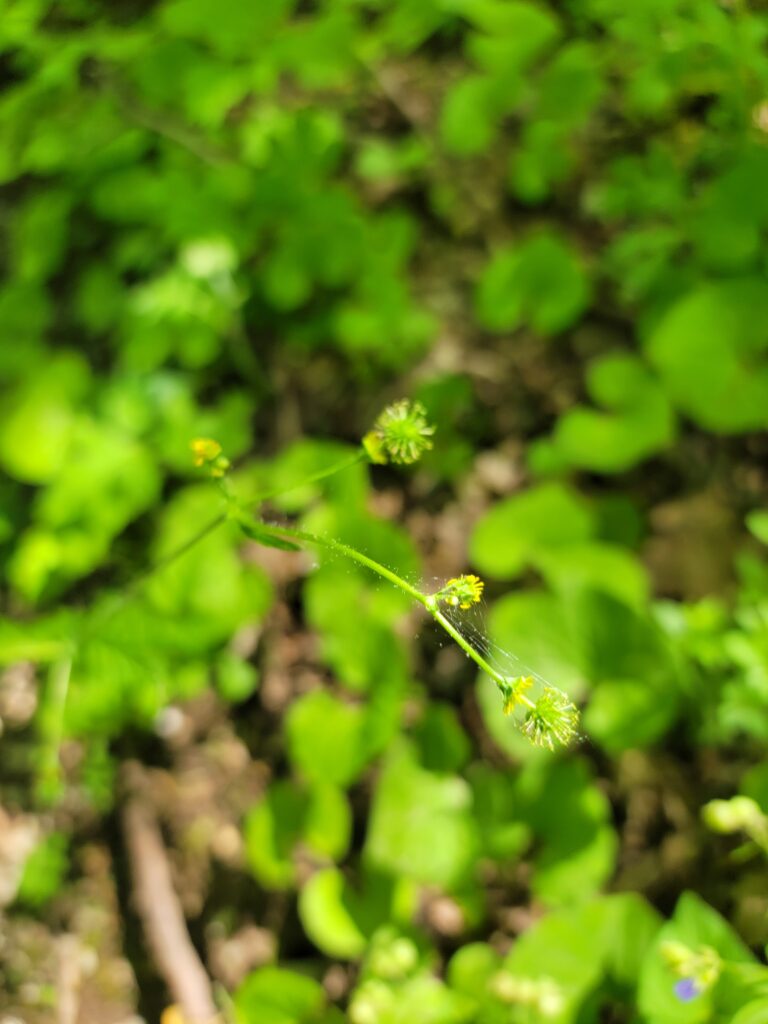
Flowers of the spring avens.
Geobotany Context
The state of Ohio is geologically divided into two regions due to the location of glaciers during the Ice Age. The western half of the state has predominantly limestone soils which make it basic (high pH) and nutrient rich but impermeable, and poorly draining and aerated. This gives rise to more severe droughts and water that tends to pool on the surface, causing floods. It is also noted for flat terrain. The eastern half is predominantly sandstone, giving it acidic (low pH) soils that are drier, nutrient poor, and in which water tends to runoff rather than sink into soils. Often found in this area are rolling hills and more mountainous terrain.
The original layers of rock in Ohio were limestone on the bottom, followed by shale above, and finally sandstone on top. The layers slowly tilted into an arch. The highest crest ran north to south in the western half of the state. Statewide, layers of both limestone and sandstone were eroded by the preglacial “Teays River” which existed for over 200 million years until the approach of the glaciers. The lowest parts of the arch run along the Appalachian Mountains to the east.
The glaciers were slowed by the steep sandstone hills of eastern Ohio, while the flat lands of western Ohio allowed glaciers to travel into northern Kentucky.
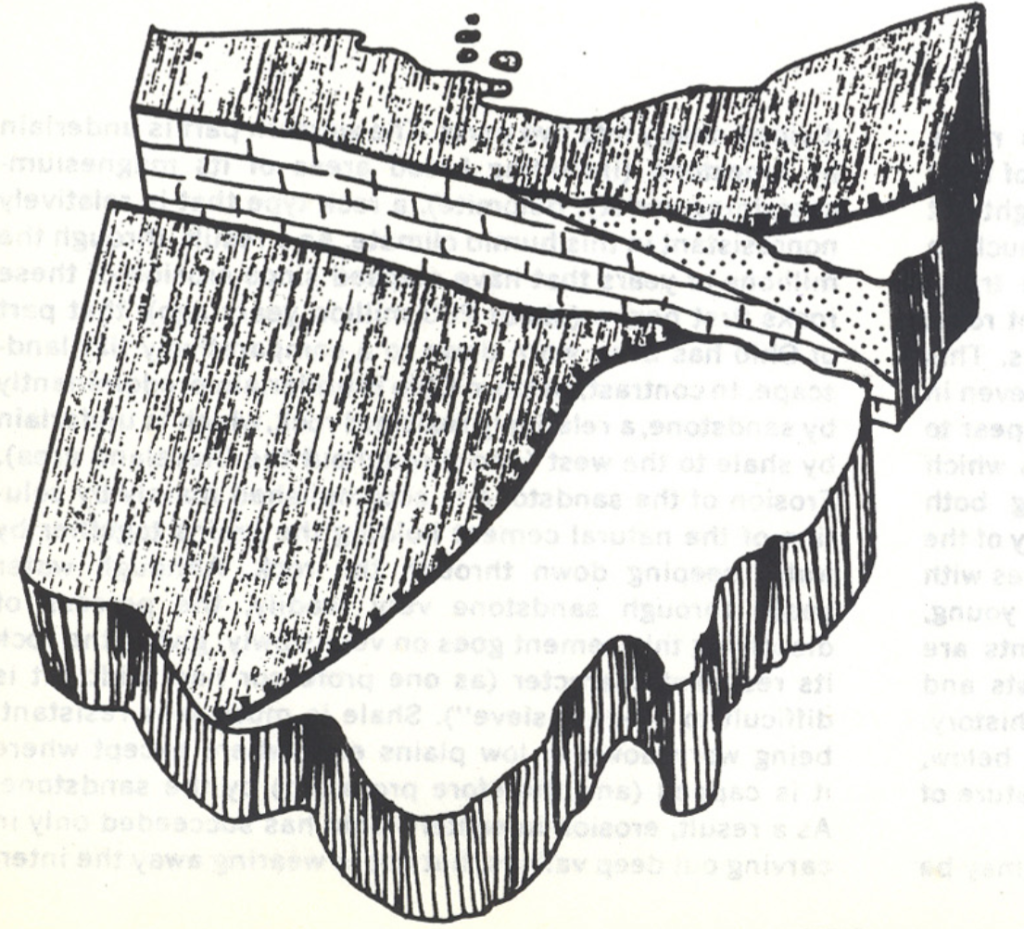
A map of Ohio with the western limestone soils and eastern acidic soils. The black boundary line in the middle shows where the glaciers stopped.
Glacial till is the process of glaciers picking up soil, rocks, silt, and clay and moving them, staying in place only after the melting and depositing from the meltwater.. This process was broad and continuous. Glaciers would erode limestone and move it to create limy soils.
Plants most often found in limy substrates are redbud, hackberry, blue ash, sedge, and nodding thistle.
Plants most often found in the high-lime, high-clay glacial tilled lands of western Ohio are sugar maple, beech, white oak, shagbark hickory, and white ash.
Plants most often found in the acidic sandstone soils of eastern Ohio are chestnut oak, sourwood, hemlock, mountain laurel, and smooth Solomon’s seal.
Plants like the sweet buckeye (Aesculus octandra) are only found in eastern Ohio due possibly to problems repopulating in the glacial tilled areas and climates of northern Ohio. Hemlock (Tsuga canadensis), on the other hand, traverse across the glacial boundary into northern parts of Ohio. This is probably due to the cool, moist valleys of eastern Ohio. Even though areas in the north may be more acidic, moisture and temperature are suitable enough to continue the success of hemlock. The distribution of rhododendron (Rhododendron maximum) is different in that it migrated south through the Teays system before glacial advance, after which the northern valleys were destroyed and only the southern populations persisted.
